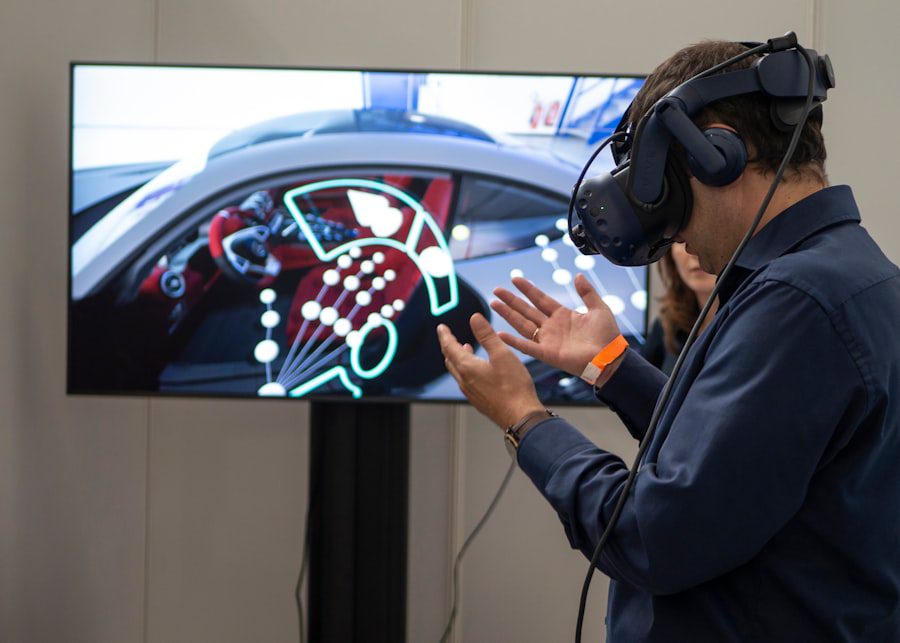The advent of technology has fundamentally transformed the fabric of society, reshaping how individuals interact, communicate, and perceive the world around them. From the rise of the internet to the proliferation of smartphones, technology has become an integral part of daily life, influencing everything from personal relationships to global politics. As we delve into the multifaceted impact of technology, it becomes evident that it serves as both a unifying force and a source of division.
The duality of technology’s role in society prompts a critical examination of its implications for social cohesion and cultural understanding. In this exploration, we will analyze various dimensions of technology’s influence, particularly focusing on social media, cultural exchange, collaboration, and the challenges posed by digital communication. By understanding these dynamics, we can better appreciate how technology can be harnessed to foster unity while also recognizing the potential pitfalls that may arise.
The journey through this complex landscape will reveal not only the transformative power of technology but also the responsibilities that come with its use in an increasingly interconnected world.
Key Takeaways
- Technology has a significant impact on society, shaping how people interact and communicate.
- Social media can both foster unity and division, depending on how it is used and the content that is shared.
- Technology has the potential to bridge cultural and language barriers, allowing for greater global connectivity.
- Collaboration and cooperation can be promoted through the use of technology, bringing people together for common goals.
- It is important to address the negative effects of technology on social unity and work towards finding solutions.
The Role of Social Media in Fostering Unity and Division
The Power of Unity
Social media has facilitated the formation of communities that transcend geographical boundaries, allowing people with shared interests or causes to unite and mobilize. For example, movements like #MeToo and Black Lives Matter have gained momentum through social media, bringing attention to critical social issues and fostering a sense of solidarity among diverse groups. The ability to share personal stories and experiences has created a collective narrative that resonates with many, highlighting the potential for social media to serve as a catalyst for unity.
The Risk of Division
On the other hand, social media can also exacerbate divisions within society. The algorithms that govern these platforms often prioritize sensational content, leading to echo chambers where users are exposed primarily to viewpoints that reinforce their existing beliefs. This phenomenon can result in polarization, as individuals become increasingly entrenched in their perspectives and less willing to engage with opposing viewpoints.
Navigating the Challenges
The spread of misinformation and hate speech on social media further complicates this landscape, creating an environment where division can flourish. As users navigate these platforms, the challenge lies in balancing the benefits of connection with the risks of fragmentation.
The Potential of Technology to Bridge Cultural and Language Barriers

Technology has the remarkable ability to bridge cultural and language barriers, fostering understanding and collaboration among diverse populations. Language translation tools, such as Google Translate and various mobile applications, have made it easier for individuals to communicate across linguistic divides. These tools not only facilitate everyday interactions but also enable businesses to expand their reach into global markets, promoting cross-cultural exchanges that were once hindered by language differences.
For example, international companies can now engage with customers from different countries more effectively, tailoring their marketing strategies to resonate with local cultures. Moreover, technology has opened up avenues for cultural exchange that were previously unimaginable. Online platforms allow users to share their traditions, art forms, and culinary practices with a global audience.
Virtual reality experiences can transport individuals to different parts of the world, immersing them in diverse cultures without leaving their homes. This exposure fosters empathy and appreciation for different ways of life, ultimately contributing to a more interconnected global community. As individuals engage with cultures beyond their own, they are more likely to develop a sense of shared humanity that transcends borders.
Using Technology to Promote Collaboration and Cooperation
In an era where collaboration is essential for addressing complex global challenges, technology plays a pivotal role in facilitating cooperation among individuals and organizations. Collaborative tools such as Slack, Microsoft Teams, and Zoom have revolutionized the way teams work together, enabling seamless communication regardless of physical location. These platforms allow for real-time collaboration on projects, fostering innovation and creativity by bringing together diverse perspectives.
For instance, during the COVID-19 pandemic, many organizations adapted to remote work by leveraging these technologies, demonstrating how they can enhance productivity while maintaining team cohesion. Furthermore, technology has enabled cross-sector partnerships that address pressing social issues. Nonprofit organizations can collaborate with tech companies to develop solutions for challenges such as poverty, education inequality, and environmental sustainability.
Initiatives like Code for America exemplify this trend by bringing together technologists and civic leaders to create digital tools that improve government services and community engagement. By harnessing the collective expertise of various stakeholders, technology can drive meaningful change and promote a spirit of cooperation that benefits society as a whole.
Addressing the Negative Effects of Technology on Social Unity
While technology has the potential to unite individuals and communities, it also presents significant challenges that can undermine social unity. One major concern is the impact of screen time on interpersonal relationships. As people increasingly turn to digital devices for communication and entertainment, face-to-face interactions may diminish, leading to feelings of isolation and loneliness.
Studies have shown that excessive use of social media can contribute to mental health issues such as anxiety and depression, particularly among younger populations who may struggle to form authentic connections in an online environment. Additionally, the digital divide remains a pressing issue that exacerbates existing inequalities within society. Access to technology is not uniform; marginalized communities often face barriers that limit their ability to participate fully in the digital landscape.
This disparity can lead to further alienation and exclusion from important conversations and opportunities. Addressing these negative effects requires a concerted effort from policymakers, educators, and technology companies to promote inclusivity and ensure that all individuals have access to the tools necessary for meaningful engagement in a digital world.
The Importance of Digital Literacy and Critical Thinking in Uniting Through Technology

As technology continues to evolve at a rapid pace, digital literacy has become an essential skill for navigating the complexities of the online world. Understanding how to critically evaluate information sources is crucial for fostering informed discussions and preventing the spread of misinformation. Educational institutions play a vital role in equipping students with these skills, teaching them not only how to use technology effectively but also how to discern credible information from unreliable sources.
By promoting digital literacy, we empower individuals to engage thoughtfully with technology and contribute positively to online discourse. Moreover, critical thinking skills are essential for fostering constructive dialogue among individuals with differing viewpoints. In an age where polarization is prevalent, encouraging open-mindedness and respectful debate can help bridge divides within communities.
Initiatives that promote media literacy and critical thinking can create spaces for dialogue where diverse perspectives are valued rather than dismissed. By cultivating an environment where individuals feel comfortable sharing their thoughts while also being receptive to others’ ideas, technology can serve as a platform for unity rather than division.
Case Studies: Successful Examples of Technology Uniting Communities
Numerous case studies illustrate how technology has successfully united communities around shared goals or causes. One notable example is the use of crowdfunding platforms like GoFundMe or Kickstarter to support local initiatives or individuals in need. During natural disasters or crises, these platforms have enabled communities to rally together quickly, raising funds for relief efforts or supporting local businesses facing economic hardships.
The collective action facilitated by these technologies demonstrates how individuals can come together in times of need, transcending geographical boundaries. Another compelling case is the role of online gaming communities in fostering connections among players from diverse backgrounds. Games like Fortnite or World of Warcraft create virtual spaces where individuals can collaborate on quests or compete against one another while forming friendships along the way.
These interactions often lead to cross-cultural exchanges as players share their experiences and perspectives within the game environment. The sense of camaraderie developed through shared gaming experiences highlights how technology can create bonds that extend beyond the screen.
Harnessing the Power of Technology for Unity
The exploration of technology’s impact on society reveals a complex interplay between its potential for fostering unity and its capacity for division. As we navigate this landscape, it is crucial to recognize both the opportunities and challenges presented by technological advancements. By leveraging social media for positive engagement, utilizing translation tools for cultural exchange, promoting collaboration through digital platforms, addressing negative effects on mental health and inclusivity, and emphasizing digital literacy and critical thinking skills, we can harness technology’s power for unity.
Ultimately, the responsibility lies with individuals, organizations, and policymakers to create an environment where technology serves as a bridge rather than a barrier. By prioritizing inclusivity and empathy in our digital interactions, we can work towards a future where technology enhances social cohesion and fosters understanding among diverse communities worldwide.


